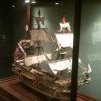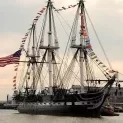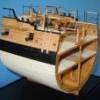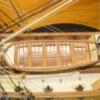-
Posts
1,920 -
Joined
-
Last visited
Reputation Activity
-
 hamilton got a reaction from Dave_E in Armed Virginia Sloop by CiscoH - Model Shipways - 1:48
hamilton got a reaction from Dave_E in Armed Virginia Sloop by CiscoH - Model Shipways - 1:48
Wow - really nice work on the companionway and other deck features, Cisco! Clean and precise!
hamilton
-
 hamilton got a reaction from CiscoH in Armed Virginia Sloop by CiscoH - Model Shipways - 1:48
hamilton got a reaction from CiscoH in Armed Virginia Sloop by CiscoH - Model Shipways - 1:48
Wow - really nice work on the companionway and other deck features, Cisco! Clean and precise!
hamilton
-
 hamilton got a reaction from JLong in Armed Virginia Sloop by CiscoH - Model Shipways - 1:48
hamilton got a reaction from JLong in Armed Virginia Sloop by CiscoH - Model Shipways - 1:48
Wow - really nice work on the companionway and other deck features, Cisco! Clean and precise!
hamilton
-
 hamilton got a reaction from RossR in Armed Virginia Sloop by CiscoH - Model Shipways - 1:48
hamilton got a reaction from RossR in Armed Virginia Sloop by CiscoH - Model Shipways - 1:48
Wow - really nice work on the companionway and other deck features, Cisco! Clean and precise!
hamilton
-
 hamilton got a reaction from Paul Le Wol in Armed Virginia Sloop by CiscoH - Model Shipways - 1:48
hamilton got a reaction from Paul Le Wol in Armed Virginia Sloop by CiscoH - Model Shipways - 1:48
Wow - really nice work on the companionway and other deck features, Cisco! Clean and precise!
hamilton
-
 hamilton reacted to CiscoH in Armed Virginia Sloop by CiscoH - Model Shipways - 1:48
hamilton reacted to CiscoH in Armed Virginia Sloop by CiscoH - Model Shipways - 1:48
Good Thursday evening MSW folk. Today's post is devoted to the Companionway which was a lot harder to make than I anticipated.
I built the coaming in my last post; this was the same as all the other coamings with mitered half-lap joints. I wanted to build my companionway with annoyingly cool details that came back to haunt me. Below is my cartoon explaining My Big Plan. First off for visual interest I wanted all the panels to have a small setback from the corner posts; I didn't want them flush. Thats demonstrated in the plan views at the top. This adds subtle shadow lines which in theory better define details.
Then I had to figure out the hinges. If the front doors are inset you can't use regular hinges because the doors will only open 90 degrees; but with offset hinges where the hinge part is outside the corner post the doors can open much wider- see the lower part of the cartoon for a better visual explanation.
In reality the offset hinge would have another bent part connecting to the door which my cartoon doesn't show well but I didn't feel like redrawing it.
The raised panels were straighforward. I made the front door panels by gluing stiles and rails to a thin piece of wood that came with the kit. Then I sanded the panels to fit and used chisels to cut the raised portions. Next time I will be more careful marking but I feel these were good enough. I drilled holes behind the panels so I could stick wire through to pop the panels out - they were a snug fit.
Then I tried to make the hardware. I had a mental image of a wire handles and a sliding latch-lock contraption. I should have tested the latch idea on scrap first; it didn't work at all. I couldn't get the hardware pieces small enough and this was the result:
You can also see my handles weren't well aligned. So I carefully chiseled the middle 2 pieces out, glued up new ones (drying at the bottom of the below pic), sanded them until I got a snug fit and glued them in. I call it a good repair; I couldn't tell I did it afterwards.
I re-drilled the handle holes being more careful to make them even and left the latch off. I poked a hole under the handles with a nail and put a drop of black paint in to represent a keyhole. Sometimes simpler is better and this looked a lot better to my eye.
Next up was making the offset hinges. I silver soldered some brass rod to brass strip, filed the pieces flush, blackened them with Brass Black very diluted, and inserted them into their holes along the side of the doors.
Here's a shot of the interior of the companionway. I found it easiest to drill holes all the way through the door for the handles, and filed small slots for the hinges. This made it easier to adjust how much they stuck out. Later I blobbed some epoxy on the inside so the hardware would stay put.
Next up I made the roof, fairly sraightforward. I learned my lesson about glue splash and covered the panel entirely with Tamiya tape except where the hinges would go. I used epoxy to hold the hinges in place, afterwards drilled holes for bolts and sanded them fairly flush. And finally I painted them black. Looking into my paint box I found I had purchased 3 separate bottles of black paint, go figure.
And finally I put it all together.
I think the pumps and binnacle are next. And I still have some ring hardware for the other hatches to make.
thanks for reading
Cisco
-
 hamilton reacted to GGibson in Bluenose 1921 by GGibson - FINISHED - Model Shipways - 1:64
hamilton reacted to GGibson in Bluenose 1921 by GGibson - FINISHED - Model Shipways - 1:64
Wow! It's been almost a full two months since I've posted any kind of build log update. I've been in the shipyard here and there over that time, in between a few trips, having all the grandkids for a week's activities here, watching the oldest granddaughter prepare for and then head to her first year away from her home at college some 8-9 states away, and just some general summertime tinkering around the house. Anyways, thought I'd get a small update in. And I took only a few pictures and hardly any detailed notes on these last activities.
After getting the lower shrouds placed, it was time to tie in what seemed like a thousand ratlines! Like everyone else does when placing ratlines, I made a lined template in order to have some relatively consistent spacing. I also used some 0.81 brass rods, blackened them, and placed the sheer poles at the base of each set of shrouds. Once you get into a routine of tying clove hitches, it goes pretty well. I would do about 4-5 rows at a time, then hit the knots with a spot of glue and once dried, clip the excess 0.009" line from each end. Then another 4-5 rows, etc., etc., etc...
As I said earlier, did not take many notes as I was preparing and installing a lot of the standing rigging, but I will go through what was done fairly quickly. There are several MSW Bluenose build logs that have great detail on their rigging procedures. I relied on them heavily and encourage others to do the same.
Spring Stay - Runs from the main mast's spring stay bail to the fore mast's spring stay bail. I used 0.027" black line.
Jib Stay - Runs from the fore mast cap to the bowsprit. I used 0.019" black line.
Jumbo Jib Stay - Runs from the fore mast to the jumbo jib stay bail. I wish I would have realized way back when I first inserted the bowsprit that this jumbo jib stay bail would be wrapped and secured around the bowsprit. At this point, it was way too difficult for me to come up with anything like that, so I "settled" for shaping a 0.81" brass rod piece so it fit around the top of the bowsprit and was secured into the deck underneath. It's the best adaptation I could come up with. I used 0.027" black line.
At this point, it was time to drop the top masts into their places. They still fit snuggly, and with the iron fids in place, it did not seem like the masts needed any additional glue.
Main Top Mast Shrouds and Fore Mast Spreader Lifts - The main top mast shrouds run from the top of the mast down to lanyards that then connected to the spreaders. The fore mast spreader lifts run from a band about a third of the way up the top mast down to lanyards that are connected to the fore mast spreader. I used 0.019" black line for the shrouds and 0.009" light beige line for the lanyards. I then tied ratlines to each of the shrouds and spreader lifts, but only did about a dozen ratlines on the main mast shrouds, reaching about a third of the way up the top mast on each side, using 0.009" black line again for the ratlines.
Pullback Stay - Runs from the top of the fore mast to the main mast cap. Still having a bit of difficulty shaping a shackle like how John Ruy explained he did his, so I simply used a small jump ring to connect to the bowsprit. I used 0.019" black line.
Balloon Jib Stay - Runs from the top of the fore mast to the end of the bowsprit. I used 0.027" black line.
Main Mast Top Stay - Runs from top of main mast to fore mast cap. I used 0.019" line.
Flying Backstays - Two sets of backstays run from the top of the main mast to either side of the stern transom. The main runs start from the main top mast using 0.027" black line. They run down to a 5/32" double block. This block is then laced with a 5/32" single block using 0.013" light beige line. The single block is connected with a "S" hook to a 0.013" black line tied to an eyebolt on the transom. The beige line then falls to a belaying pin on the rail. I have not permanently secured the top of these backstays to the main top mast or the fall line to the belay pins at this time, as I fear they would get snagged and be in the way when I work on the remainder of the running rigging and the main boom. So, the lines will come down from the main top mast as I do that work.
I am going to see if I can get some running lights placed on the two sets of foremast shrouds. Then it is time to get the running rigging that I prepped months ago attached where it belongs on this Bluenose! Those of you who have followed my progress (or lack thereof) on this Bluenose (thank you, by the way!) may recall that I have wrestled with how to finish my Bluenose... with sails, without sails, or furled sails. And I have leaned each of the three ways multiple times over the almost-two years I have worked on her. Well, stand by for my decision...!
Thanks to all for taking the time to read, comment and criticize! Appreciate all of the support, whether it's been your input here or my peeking in on your own Bluenose build logs and having one of those "Oh, yeah!" epiphanies. Thanks!
-
 hamilton got a reaction from mtaylor in HMS Echo by Hamilton - Admiralty Models - 1:48 - cross-section
hamilton got a reaction from mtaylor in HMS Echo by Hamilton - Admiralty Models - 1:48 - cross-section
The well/shot locker is now done apart from the hardware for the shot locker lids, which will be a challenge for me given my lack of experience with metal work....in any case the work is not perfect, but that's ok with me - learning as I go and hopefully the results will be better next time...in any case I'm happy with the results, such as they are. Everything is still dry fit, so it's tricky to get things absolutely lined up, but you get the idea.
After the hardware for the shot locker lids (or before depending on how well my experiments go), I'll move on to the pillar in the hold and will then install all these elements permanently. Before installing the lower deck beams, I'll have to mark them and notch them out for the carlings - for this a framing template needs to be made from the deck plan included in the practicum, adjusted for the model as built, and a centreline marked on the deck beams. And on, and on....
hamilton
-
 hamilton got a reaction from scrubbyj427 in HMS Echo by Hamilton - Admiralty Models - 1:48 - cross-section
hamilton got a reaction from scrubbyj427 in HMS Echo by Hamilton - Admiralty Models - 1:48 - cross-section
The well/shot locker is now done apart from the hardware for the shot locker lids, which will be a challenge for me given my lack of experience with metal work....in any case the work is not perfect, but that's ok with me - learning as I go and hopefully the results will be better next time...in any case I'm happy with the results, such as they are. Everything is still dry fit, so it's tricky to get things absolutely lined up, but you get the idea.
After the hardware for the shot locker lids (or before depending on how well my experiments go), I'll move on to the pillar in the hold and will then install all these elements permanently. Before installing the lower deck beams, I'll have to mark them and notch them out for the carlings - for this a framing template needs to be made from the deck plan included in the practicum, adjusted for the model as built, and a centreline marked on the deck beams. And on, and on....
hamilton
-
 hamilton reacted to Stuntflyer in Sloop Speedwell 1752 by Stuntflyer (Mike) - Ketch Rigged Sloop - POF
hamilton reacted to Stuntflyer in Sloop Speedwell 1752 by Stuntflyer (Mike) - Ketch Rigged Sloop - POF
Hamilton, thank you for the compliment!
I think the most important thing you can do in order to build a clean ship is to work slowly and methodically. Use the right tools and treat each part as a project in itself. Do-overs are part of the hobby and there is so much to learn when doing them. So, don't settle for mediocrity. Try to get neat and tight fits when adding parts to the ship. Keep the work surface and hands clean.
Think about how you want to approach each project before you start and you will get a much better result.
Mike
-
 hamilton got a reaction from GGibson in 1921 Bluenose by John Ruy - FINISHED - Model Shipways - 1/64 scale - Canadian Fishing Schooner
hamilton got a reaction from GGibson in 1921 Bluenose by John Ruy - FINISHED - Model Shipways - 1/64 scale - Canadian Fishing Schooner
A beautiful rendition, John! Your display room is quite a treat to look at, too!
hamilton
-
 hamilton got a reaction from mtaylor in Sloop Speedwell 1752 by Stuntflyer (Mike) - Ketch Rigged Sloop - POF
hamilton got a reaction from mtaylor in Sloop Speedwell 1752 by Stuntflyer (Mike) - Ketch Rigged Sloop - POF
Loving your work on this Mike! How do you keep your model so clean?
hamilton
-
 hamilton got a reaction from Matt D in HMS Echo by Hamilton - Admiralty Models - 1:48 - cross-section
hamilton got a reaction from Matt D in HMS Echo by Hamilton - Admiralty Models - 1:48 - cross-section
The well/shot locker is now done apart from the hardware for the shot locker lids, which will be a challenge for me given my lack of experience with metal work....in any case the work is not perfect, but that's ok with me - learning as I go and hopefully the results will be better next time...in any case I'm happy with the results, such as they are. Everything is still dry fit, so it's tricky to get things absolutely lined up, but you get the idea.
After the hardware for the shot locker lids (or before depending on how well my experiments go), I'll move on to the pillar in the hold and will then install all these elements permanently. Before installing the lower deck beams, I'll have to mark them and notch them out for the carlings - for this a framing template needs to be made from the deck plan included in the practicum, adjusted for the model as built, and a centreline marked on the deck beams. And on, and on....
hamilton
-
 hamilton got a reaction from gsdpic in HMS Echo by Hamilton - Admiralty Models - 1:48 - cross-section
hamilton got a reaction from gsdpic in HMS Echo by Hamilton - Admiralty Models - 1:48 - cross-section
The well/shot locker is now done apart from the hardware for the shot locker lids, which will be a challenge for me given my lack of experience with metal work....in any case the work is not perfect, but that's ok with me - learning as I go and hopefully the results will be better next time...in any case I'm happy with the results, such as they are. Everything is still dry fit, so it's tricky to get things absolutely lined up, but you get the idea.
After the hardware for the shot locker lids (or before depending on how well my experiments go), I'll move on to the pillar in the hold and will then install all these elements permanently. Before installing the lower deck beams, I'll have to mark them and notch them out for the carlings - for this a framing template needs to be made from the deck plan included in the practicum, adjusted for the model as built, and a centreline marked on the deck beams. And on, and on....
hamilton
-
 hamilton got a reaction from CiscoH in HMS Echo by Hamilton - Admiralty Models - 1:48 - cross-section
hamilton got a reaction from CiscoH in HMS Echo by Hamilton - Admiralty Models - 1:48 - cross-section
The well/shot locker is now done apart from the hardware for the shot locker lids, which will be a challenge for me given my lack of experience with metal work....in any case the work is not perfect, but that's ok with me - learning as I go and hopefully the results will be better next time...in any case I'm happy with the results, such as they are. Everything is still dry fit, so it's tricky to get things absolutely lined up, but you get the idea.
After the hardware for the shot locker lids (or before depending on how well my experiments go), I'll move on to the pillar in the hold and will then install all these elements permanently. Before installing the lower deck beams, I'll have to mark them and notch them out for the carlings - for this a framing template needs to be made from the deck plan included in the practicum, adjusted for the model as built, and a centreline marked on the deck beams. And on, and on....
hamilton
-
 hamilton got a reaction from dvm27 in HMS Echo by Hamilton - Admiralty Models - 1:48 - cross-section
hamilton got a reaction from dvm27 in HMS Echo by Hamilton - Admiralty Models - 1:48 - cross-section
The well/shot locker is now done apart from the hardware for the shot locker lids, which will be a challenge for me given my lack of experience with metal work....in any case the work is not perfect, but that's ok with me - learning as I go and hopefully the results will be better next time...in any case I'm happy with the results, such as they are. Everything is still dry fit, so it's tricky to get things absolutely lined up, but you get the idea.
After the hardware for the shot locker lids (or before depending on how well my experiments go), I'll move on to the pillar in the hold and will then install all these elements permanently. Before installing the lower deck beams, I'll have to mark them and notch them out for the carlings - for this a framing template needs to be made from the deck plan included in the practicum, adjusted for the model as built, and a centreline marked on the deck beams. And on, and on....
hamilton
-
 hamilton got a reaction from davec in HMS Echo by Hamilton - Admiralty Models - 1:48 - cross-section
hamilton got a reaction from davec in HMS Echo by Hamilton - Admiralty Models - 1:48 - cross-section
The well/shot locker is now done apart from the hardware for the shot locker lids, which will be a challenge for me given my lack of experience with metal work....in any case the work is not perfect, but that's ok with me - learning as I go and hopefully the results will be better next time...in any case I'm happy with the results, such as they are. Everything is still dry fit, so it's tricky to get things absolutely lined up, but you get the idea.
After the hardware for the shot locker lids (or before depending on how well my experiments go), I'll move on to the pillar in the hold and will then install all these elements permanently. Before installing the lower deck beams, I'll have to mark them and notch them out for the carlings - for this a framing template needs to be made from the deck plan included in the practicum, adjusted for the model as built, and a centreline marked on the deck beams. And on, and on....
hamilton
-
 hamilton got a reaction from yvesvidal in HMS Echo by Hamilton - Admiralty Models - 1:48 - cross-section
hamilton got a reaction from yvesvidal in HMS Echo by Hamilton - Admiralty Models - 1:48 - cross-section
The well/shot locker is now done apart from the hardware for the shot locker lids, which will be a challenge for me given my lack of experience with metal work....in any case the work is not perfect, but that's ok with me - learning as I go and hopefully the results will be better next time...in any case I'm happy with the results, such as they are. Everything is still dry fit, so it's tricky to get things absolutely lined up, but you get the idea.
After the hardware for the shot locker lids (or before depending on how well my experiments go), I'll move on to the pillar in the hold and will then install all these elements permanently. Before installing the lower deck beams, I'll have to mark them and notch them out for the carlings - for this a framing template needs to be made from the deck plan included in the practicum, adjusted for the model as built, and a centreline marked on the deck beams. And on, and on....
hamilton
-
 hamilton got a reaction from mtaylor in HMS Echo by Hamilton - Admiralty Models - 1:48 - cross-section
hamilton got a reaction from mtaylor in HMS Echo by Hamilton - Admiralty Models - 1:48 - cross-section
Thanks Druxey! Means a lot coming from you!
Work continues on the well. Today I managed to make the forward panel of the well, which is actually the forward panel of the shot locker. I also made a small interior panel that separates the port and starboard sections of the shot locker. To do this, I made a small right angle jig and edge glued the pieces together before attaching a 4" x 4" stanchion to one edge - the other is fixed to the corresponding centre stanchion on the middle panel. Photos below.
Once the three panels were complete and the middle one attached to the forward one, I dry fit the panels onto the model in its proper position - this allowed me to run a tick strip alongside the panels and take a measure of its overall length. I then made a small "cradle" - really just some 1/16" basswood strips clamped onto a piece of plywood - to the well's length measure. The fore and mid panel stand on their own, while I used a couple of clamps to keep the aft panel upright while the first planks were installed. Photos also below.
I only planked as far as where the planks start to angle back to accommodate the shot locker lids. I then made the shot locker lids using 14" boxwood milled to 2". Two stripe were used for each of the lids, edge glued together. The top and bottom ends were chamfered off to fit snugly in place - they are not yet attached to the model but I am using them to cut the planking strips of the well that angle back in line with them....the work week starts again, but I may be able to carve out time evenings this week, so hopefully a bit more progress - hard to believe that another school year is about to start - they are going by faster every time - I might have liked that a decade ago, now, I'm not so sure....
hamilton
-
 hamilton got a reaction from Matt D in HMS Echo by Hamilton - Admiralty Models - 1:48 - cross-section
hamilton got a reaction from Matt D in HMS Echo by Hamilton - Admiralty Models - 1:48 - cross-section
Thanks Druxey! Means a lot coming from you!
Work continues on the well. Today I managed to make the forward panel of the well, which is actually the forward panel of the shot locker. I also made a small interior panel that separates the port and starboard sections of the shot locker. To do this, I made a small right angle jig and edge glued the pieces together before attaching a 4" x 4" stanchion to one edge - the other is fixed to the corresponding centre stanchion on the middle panel. Photos below.
Once the three panels were complete and the middle one attached to the forward one, I dry fit the panels onto the model in its proper position - this allowed me to run a tick strip alongside the panels and take a measure of its overall length. I then made a small "cradle" - really just some 1/16" basswood strips clamped onto a piece of plywood - to the well's length measure. The fore and mid panel stand on their own, while I used a couple of clamps to keep the aft panel upright while the first planks were installed. Photos also below.
I only planked as far as where the planks start to angle back to accommodate the shot locker lids. I then made the shot locker lids using 14" boxwood milled to 2". Two stripe were used for each of the lids, edge glued together. The top and bottom ends were chamfered off to fit snugly in place - they are not yet attached to the model but I am using them to cut the planking strips of the well that angle back in line with them....the work week starts again, but I may be able to carve out time evenings this week, so hopefully a bit more progress - hard to believe that another school year is about to start - they are going by faster every time - I might have liked that a decade ago, now, I'm not so sure....
hamilton
-
 hamilton got a reaction from mtaylor in HMS Echo by Hamilton - Admiralty Models - 1:48 - cross-section
hamilton got a reaction from mtaylor in HMS Echo by Hamilton - Admiralty Models - 1:48 - cross-section
Made the middle panel of the well today - same procedure as the aft panel with one added element - a 4" x 4" cross piece that defines the top of the shot locker and on which the hinges for the shot locker lids sit. This middle panel tenons into the central lower deck beam. The photos below show the parts dry fit on the cross-section.
Next up is the front panel of the shot locker, after which the port and starboard side cladding can be put on to complete the basic form of the well. The shot locker lids and hardware will finish this off - I will try to make the hinges, etc, from brass, but my metal working skills are pretty much non-existent....a real impediment for scratch building....we'll see how it goes....
In the meantime enjoy the photos and bye for now
hamilton
-
 hamilton got a reaction from JacquesCousteau in HMS Echo by Hamilton - Admiralty Models - 1:48 - cross-section
hamilton got a reaction from JacquesCousteau in HMS Echo by Hamilton - Admiralty Models - 1:48 - cross-section
Thanks Druxey! Means a lot coming from you!
Work continues on the well. Today I managed to make the forward panel of the well, which is actually the forward panel of the shot locker. I also made a small interior panel that separates the port and starboard sections of the shot locker. To do this, I made a small right angle jig and edge glued the pieces together before attaching a 4" x 4" stanchion to one edge - the other is fixed to the corresponding centre stanchion on the middle panel. Photos below.
Once the three panels were complete and the middle one attached to the forward one, I dry fit the panels onto the model in its proper position - this allowed me to run a tick strip alongside the panels and take a measure of its overall length. I then made a small "cradle" - really just some 1/16" basswood strips clamped onto a piece of plywood - to the well's length measure. The fore and mid panel stand on their own, while I used a couple of clamps to keep the aft panel upright while the first planks were installed. Photos also below.
I only planked as far as where the planks start to angle back to accommodate the shot locker lids. I then made the shot locker lids using 14" boxwood milled to 2". Two stripe were used for each of the lids, edge glued together. The top and bottom ends were chamfered off to fit snugly in place - they are not yet attached to the model but I am using them to cut the planking strips of the well that angle back in line with them....the work week starts again, but I may be able to carve out time evenings this week, so hopefully a bit more progress - hard to believe that another school year is about to start - they are going by faster every time - I might have liked that a decade ago, now, I'm not so sure....
hamilton
-
 hamilton got a reaction from yvesvidal in HMS Echo by Hamilton - Admiralty Models - 1:48 - cross-section
hamilton got a reaction from yvesvidal in HMS Echo by Hamilton - Admiralty Models - 1:48 - cross-section
Thanks Druxey! Means a lot coming from you!
Work continues on the well. Today I managed to make the forward panel of the well, which is actually the forward panel of the shot locker. I also made a small interior panel that separates the port and starboard sections of the shot locker. To do this, I made a small right angle jig and edge glued the pieces together before attaching a 4" x 4" stanchion to one edge - the other is fixed to the corresponding centre stanchion on the middle panel. Photos below.
Once the three panels were complete and the middle one attached to the forward one, I dry fit the panels onto the model in its proper position - this allowed me to run a tick strip alongside the panels and take a measure of its overall length. I then made a small "cradle" - really just some 1/16" basswood strips clamped onto a piece of plywood - to the well's length measure. The fore and mid panel stand on their own, while I used a couple of clamps to keep the aft panel upright while the first planks were installed. Photos also below.
I only planked as far as where the planks start to angle back to accommodate the shot locker lids. I then made the shot locker lids using 14" boxwood milled to 2". Two stripe were used for each of the lids, edge glued together. The top and bottom ends were chamfered off to fit snugly in place - they are not yet attached to the model but I am using them to cut the planking strips of the well that angle back in line with them....the work week starts again, but I may be able to carve out time evenings this week, so hopefully a bit more progress - hard to believe that another school year is about to start - they are going by faster every time - I might have liked that a decade ago, now, I'm not so sure....
hamilton
-
 hamilton got a reaction from CiscoH in HMS Echo by Hamilton - Admiralty Models - 1:48 - cross-section
hamilton got a reaction from CiscoH in HMS Echo by Hamilton - Admiralty Models - 1:48 - cross-section
Thanks Druxey! Means a lot coming from you!
Work continues on the well. Today I managed to make the forward panel of the well, which is actually the forward panel of the shot locker. I also made a small interior panel that separates the port and starboard sections of the shot locker. To do this, I made a small right angle jig and edge glued the pieces together before attaching a 4" x 4" stanchion to one edge - the other is fixed to the corresponding centre stanchion on the middle panel. Photos below.
Once the three panels were complete and the middle one attached to the forward one, I dry fit the panels onto the model in its proper position - this allowed me to run a tick strip alongside the panels and take a measure of its overall length. I then made a small "cradle" - really just some 1/16" basswood strips clamped onto a piece of plywood - to the well's length measure. The fore and mid panel stand on their own, while I used a couple of clamps to keep the aft panel upright while the first planks were installed. Photos also below.
I only planked as far as where the planks start to angle back to accommodate the shot locker lids. I then made the shot locker lids using 14" boxwood milled to 2". Two stripe were used for each of the lids, edge glued together. The top and bottom ends were chamfered off to fit snugly in place - they are not yet attached to the model but I am using them to cut the planking strips of the well that angle back in line with them....the work week starts again, but I may be able to carve out time evenings this week, so hopefully a bit more progress - hard to believe that another school year is about to start - they are going by faster every time - I might have liked that a decade ago, now, I'm not so sure....
hamilton
-
 hamilton got a reaction from davec in HMS Echo by Hamilton - Admiralty Models - 1:48 - cross-section
hamilton got a reaction from davec in HMS Echo by Hamilton - Admiralty Models - 1:48 - cross-section
Thanks Druxey! Means a lot coming from you!
Work continues on the well. Today I managed to make the forward panel of the well, which is actually the forward panel of the shot locker. I also made a small interior panel that separates the port and starboard sections of the shot locker. To do this, I made a small right angle jig and edge glued the pieces together before attaching a 4" x 4" stanchion to one edge - the other is fixed to the corresponding centre stanchion on the middle panel. Photos below.
Once the three panels were complete and the middle one attached to the forward one, I dry fit the panels onto the model in its proper position - this allowed me to run a tick strip alongside the panels and take a measure of its overall length. I then made a small "cradle" - really just some 1/16" basswood strips clamped onto a piece of plywood - to the well's length measure. The fore and mid panel stand on their own, while I used a couple of clamps to keep the aft panel upright while the first planks were installed. Photos also below.
I only planked as far as where the planks start to angle back to accommodate the shot locker lids. I then made the shot locker lids using 14" boxwood milled to 2". Two stripe were used for each of the lids, edge glued together. The top and bottom ends were chamfered off to fit snugly in place - they are not yet attached to the model but I am using them to cut the planking strips of the well that angle back in line with them....the work week starts again, but I may be able to carve out time evenings this week, so hopefully a bit more progress - hard to believe that another school year is about to start - they are going by faster every time - I might have liked that a decade ago, now, I'm not so sure....
hamilton




.thumb.jpeg.ffac2f8a24d212961a83eab4efb06a6c.jpeg)



.thumb.jpg.6d6ee4bdbfaac2c58ecc77e7b80ae374.jpg)



